Touchscreen Mirror Applications: From Bathrooms to Retail Spaces
September 26, 2025
Table of Contents:
- What is a Smart Touchscreen Mirror
- Features, UX & Performance Metrics for Touchscreen Mirrors
- Deploying Touchscreen Bathroom Mirrors
- Integration, Software & Ecosystem Connectivity of Touchscreen Mirrors
- Applications & Industry Use Cases for Touchscreen Mirrors
- Installation, Infrastructure & Lifecycle Considerations
- Conclusion
- FAQ
Touchscreen mirrors represent one of the most dynamic trends in smart interior design — merging reflection with interactivity. As bathrooms, hotels, and retail spaces become increasingly connected, these mirrors transform from static surfaces into intelligent control centers.
For business, the technology offers space optimization, hygiene benefits through touchless modes, and new opportunities for personalization, creating a balance between aesthetics and advanced usability.
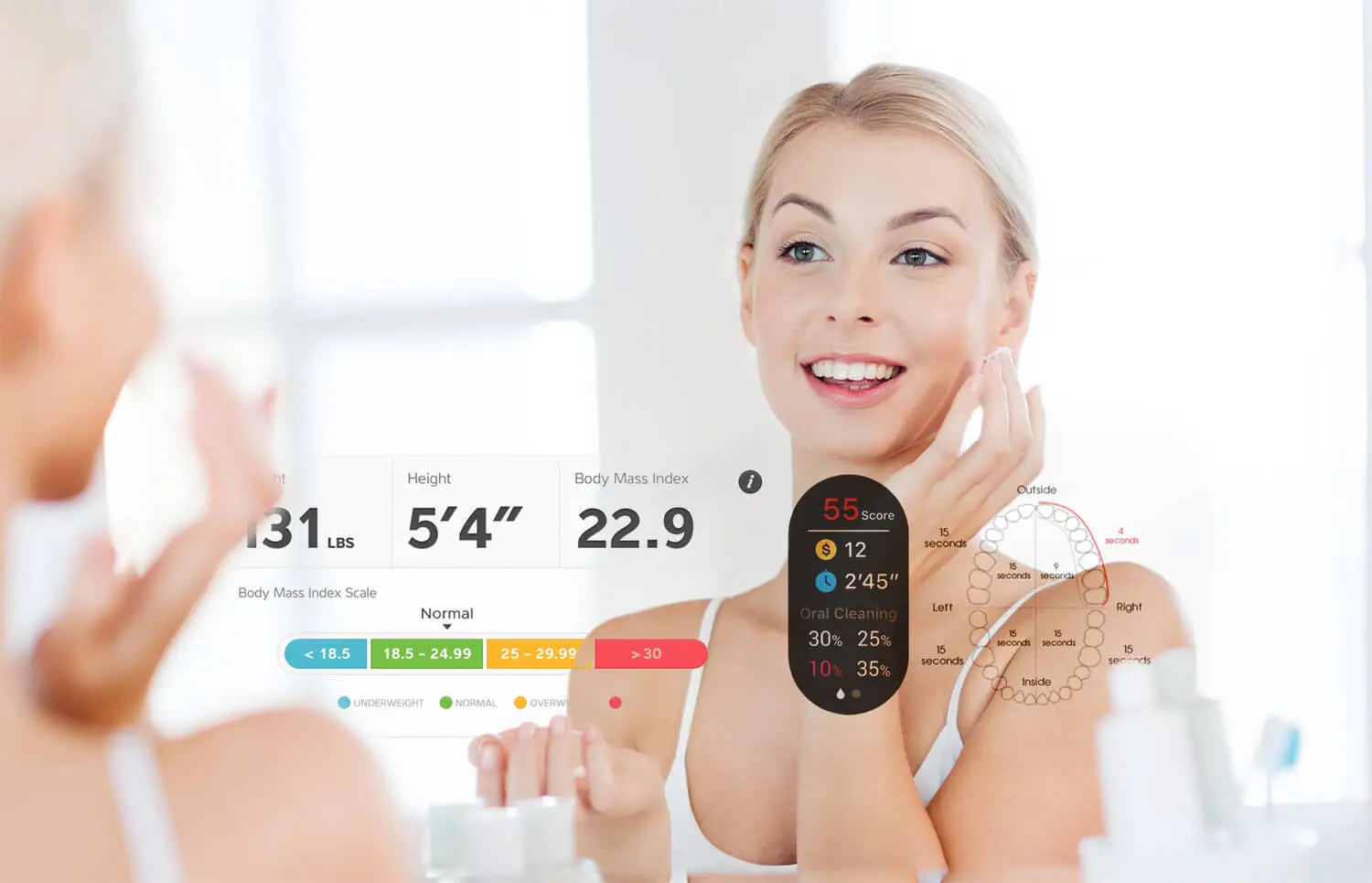
What is a Smart Touchscreen Mirror
A touchscreen mirror is a fusion of reflective glass, embedded display, and capacitive touch technology. It functions both as a traditional mirror and an interactive interface for content control, data visualization, and smart-home integration.
The core structure includes:
- Dielectric mirror glass that reflects approximately 60% of light while transmitting the display image.
- LCD or OLED panel with adjustable brightness (typically 400–1000 nits).
- Capacitive touch layer for gesture and touch detection through the glass.
- Embedded processor, Wi-Fi/Ethernet module, and audio components for full functionality.
The touchscreen mirror architecture ensures smooth interaction even in humid or brightly lit environments, thanks to coatings and optical calibration.
Capacitive vs. IR vs. Hybrid Touch Under Glass
Capacitive touch systems detect human touch using electrical conductivity and offer faster response times (<50 ms). Infrared (IR) systems, while less precise, can function through thicker glass and with gloves. Hybrid systems combine both, providing a balance of speed and flexibility for public installations such as retail or corporate spaces.
Touchscreen Mirror vs. Non-Touch Smart Mirror vs. LED Mirror
| Feature | Touchscreen Mirror | Non-Touch Smart Mirror | LED Mirror |
| Interactivity | Full (touch + gesture) | Voice or sensor only | None |
| Display Type | Embedded LCD/OLED | Optional display | Lighting only |
| Integration | IoT, BMS, PMS, CMS | Limited | None |
| Use Case | Retail, hospitality, bathroom | Consumer, wellness | Residential |
| User Input | Touchscreen | Voice/gesture | Manual switch |
This comparison highlights that touchscreen mirrors deliver the most intuitive and versatile interface for modern environments.
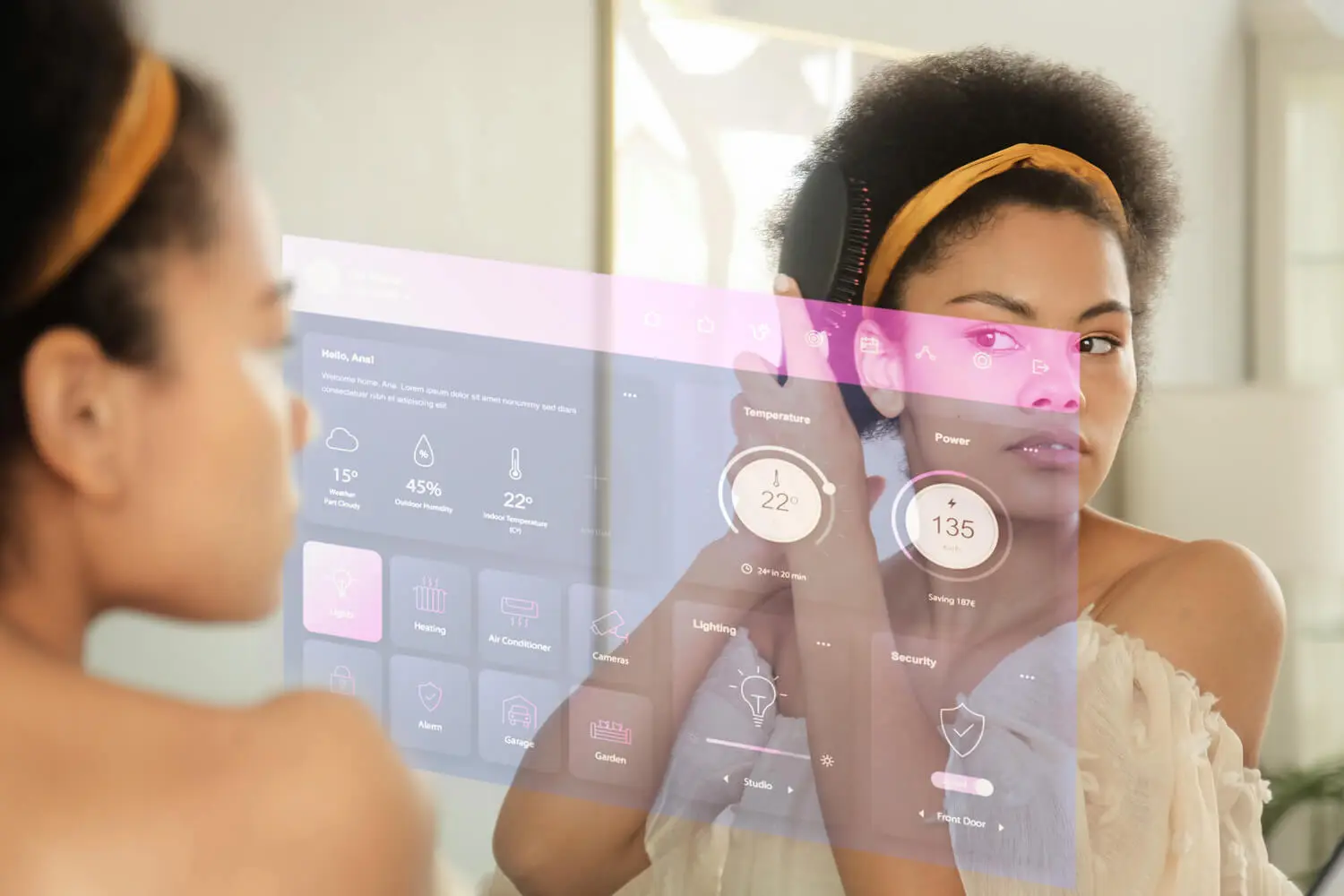
Features, UX & Performance Metrics for Touchscreen Mirrors
A smart touchscreen mirror enhances both functionality and user experience through interactivity, precision lighting, and intelligent control systems.
Gesture, Multi-Touch, and Voice Interaction
Touch gestures enable zoom, swipe, and scroll actions for navigating dashboards or applications. Voice integration with Alexa or Google Home allows hands-free control — vital in bathrooms or spas. Multi-touch support improves usability in commercial contexts such as retail stores or hotel check-in points.
MUES-TEC employs capacitive multi-point touch calibration to ensure responsiveness through varying mirror thicknesses, maintaining a reliable interface even in high-moisture settings.
Lighting, Defogging & Privacy
A touchscreen bathroom mirror often integrates LED lighting adjustable in color temperature (2700–6500K) and CRI 90+ for accurate color reflection. Anti-fog heating pads eliminate condensation, and optional privacy shutters safeguard embedded cameras in public or hospitality installations.
Key Performance Indicators
Professionals assess mirror performance by:
- Brightness: Minimum 600 nits for clarity behind glass.
- Touch latency: Below 50 ms for seamless control.
- Reflectivity ratio: Balanced 60/40 for image and reflection.
- Power draw: 40–70 W, depending on display size.
Performance optimization is a hallmark of MUES-TEC, whose engineering ensures consistency across hotel, retail, and residential environments.
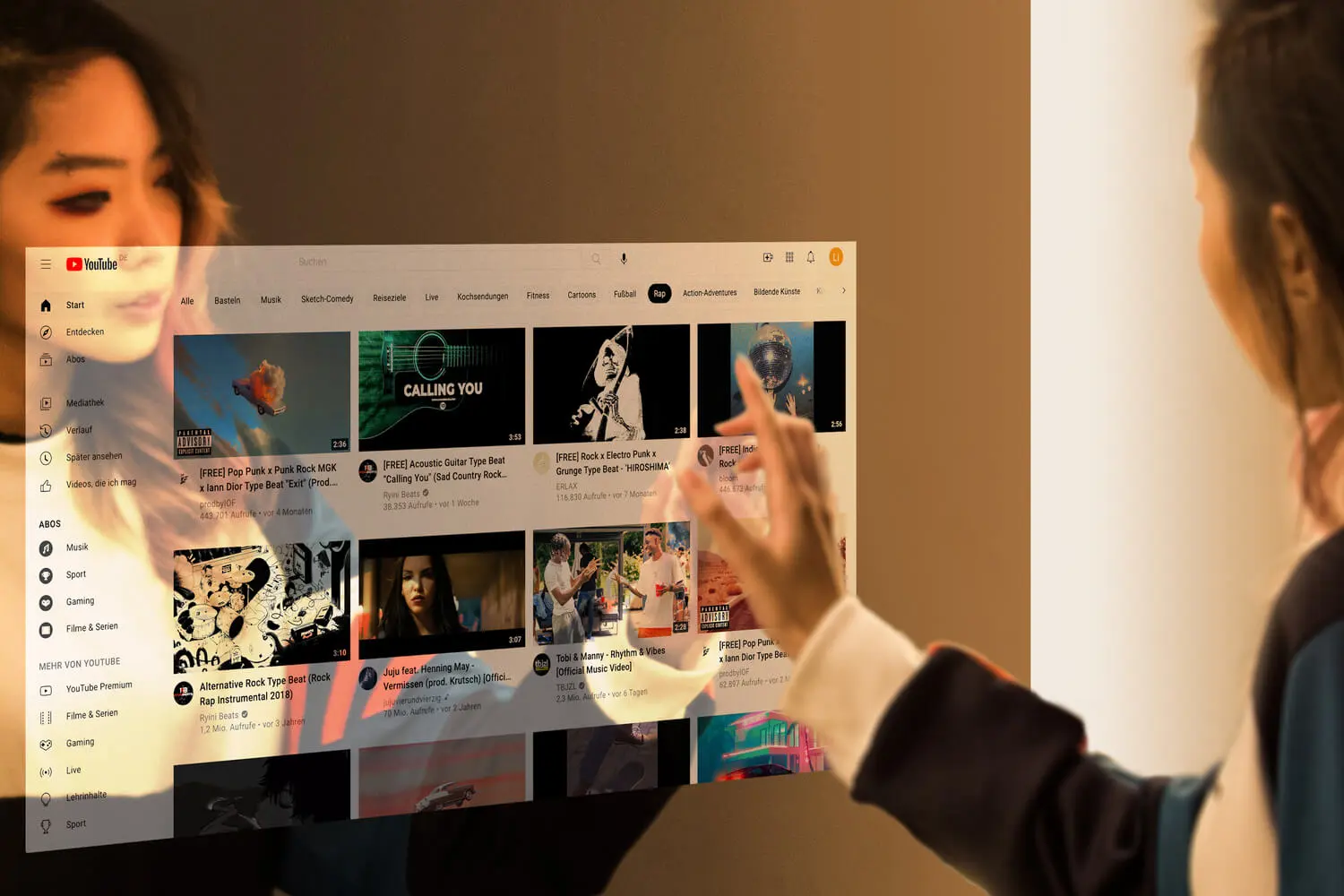
Deploying Touchscreen Bathroom Mirrors
A touchscreen bathroom mirror combines smart functionality with waterproof engineering to ensure reliability in humid environments.
IP Ratings and Safety
Professional installations require a minimum IP44 rating for splash protection, while spas or wellness centers may need IP65-rated enclosures. Electrical connections must be GFCI-protected, following IEC bathroom zoning guidelines.
Anti-Fog and Moisture Protection
Heating elements integrated behind the glass prevent fog buildup. Coatings and sealed aluminum housings protect electronic components. MUES-TEC designs its bathroom mirrors with corrosion-resistant materials and hydrophobic glass to withstand long-term humidity exposure.
Flush Mount vs. Surface Mount
Flush-mount installations deliver a minimalist aesthetic, while surface-mount designs simplify retrofits. The choice depends on wall depth, wiring, and ventilation requirements.
Installer’s Quick Checklist
- Confirm wall load-bearing capacity (up to 20 kg typical).
- Allow 10 mm air gap for thermal dissipation.
- Use IP65 power connectors in wet zones.
- Verify local code compliance for bathroom zones.
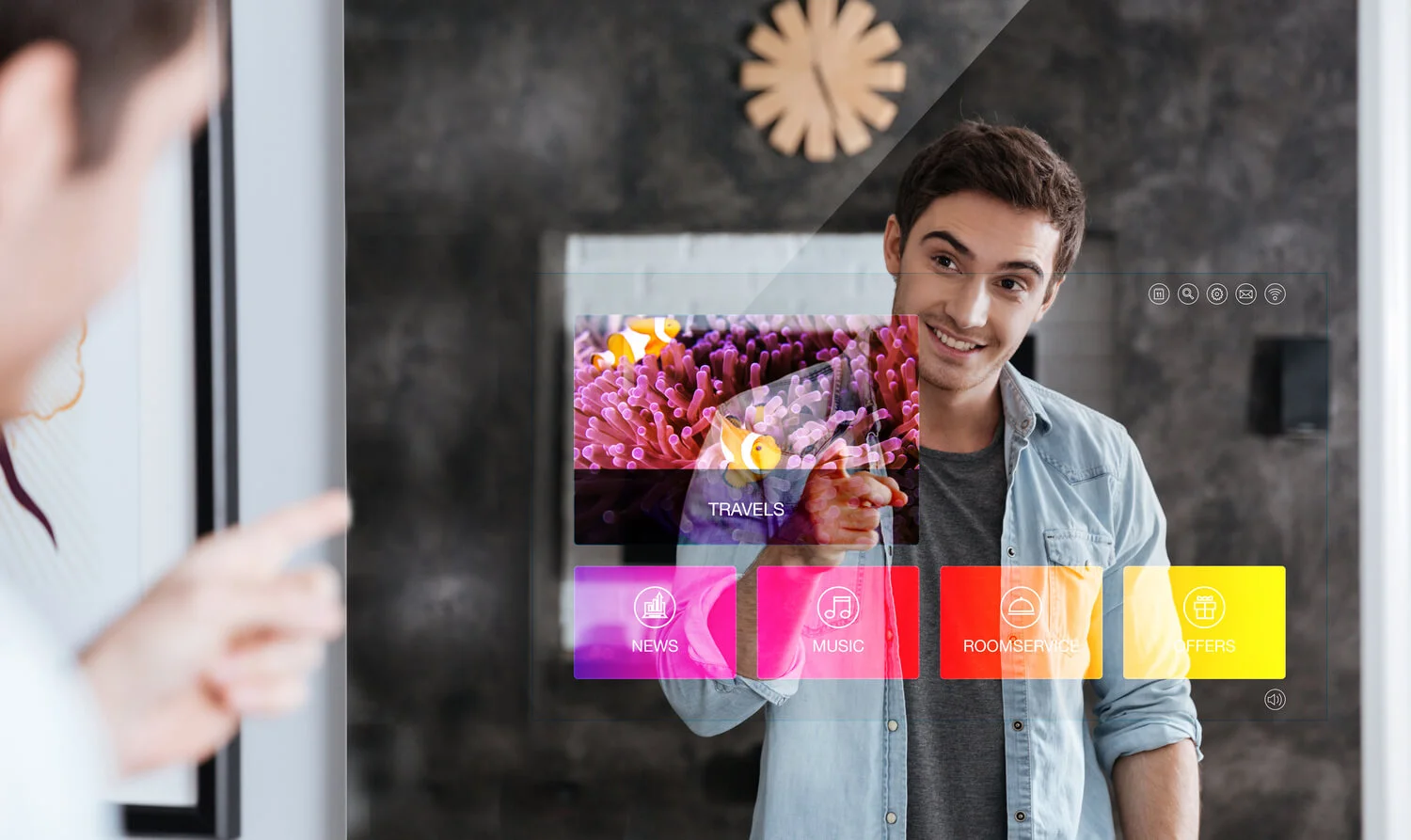
Integration, Software & Ecosystem Connectivity of Touchscreen Mirrors
Modern smart spaces depend on seamless communication between devices. In this context, the integration and software architecture of a touchscreen mirror determine how effectively it fits into a broader digital ecosystem.
CMS, OTA & Device Management
Most professional touchscreen mirrors operate on Android or Linux OS, enabling content management via cloud CMS. Over-the-air (OTA) updates streamline firmware upgrades and security patches. Device management platforms (MDM/EMM) allow operators to monitor health, uptime, and analytics remotely.
API, Identity & Analytics
APIs connect mirrors to property management systems (PMS), building management systems (BMS), and enterprise analytics platforms. OAuth2 or SAML authentication ensures data security. Usage analytics help retailers and hoteliers understand engagement metrics — display time, user interactions, and dwell time.
Smart Home and System Interoperability
MUES-TEC’s firmware architecture supports native integration with major IoT platforms, enabling multi-device synchronization across lighting, HVAC, and entertainment systems.
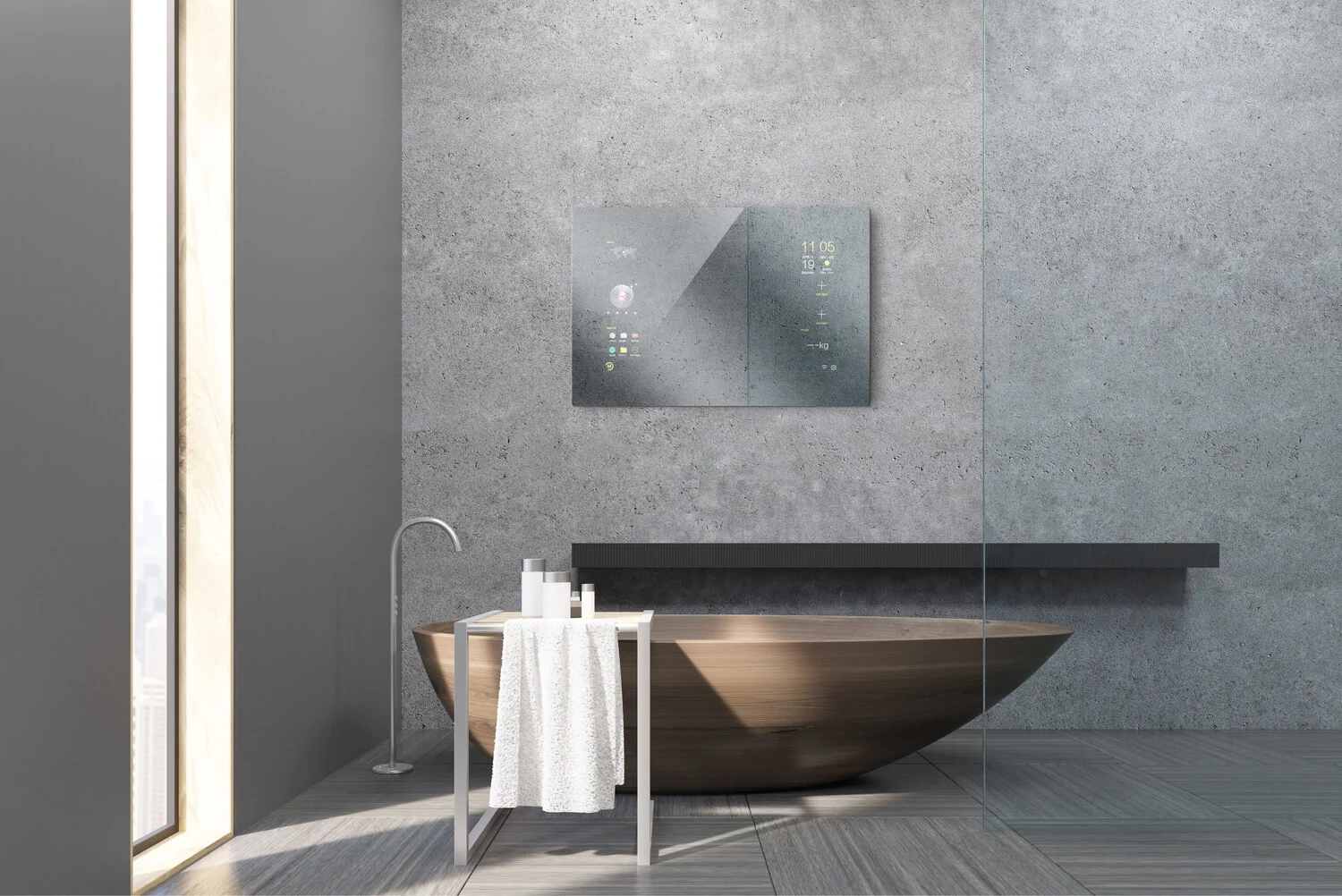
Applications & Industry Use Cases for Touchscreen Mirrors
Touchscreen mirrors are redefining interactive experiences across industries — merging design, information, and usability.
Hospitality & Guest-Room Experience
Hotels integrate mirrors into guest rooms and bathrooms to provide lighting, infotainment, and room-control interfaces. Guests can check the weather, manage room temperature, or order services directly from the mirror.
MUES-TEC collaborates with international hospitality chains to deliver customized mirror systems featuring multilingual dashboards and PMS integration.
Retail & Fitting Rooms
In retail, touchscreen mirrors act as interactive fitting assistants. Shoppers can preview outfit colors, check inventory, or request help. Real-time analytics inform retailers about browsing patterns and product interest, enhancing operational insights.
Wellness, Fitness & Healthcare
Fitness studios deploy mirrors for AI-driven workout tracking, while clinics use them for telemedicine consultations. Hospitals and wellness centers benefit from contactless data visualization and patient education.
Corporate Design
Residential installations combine daily utility with smart-home control. In offices, lobby mirrors provide wayfinding or corporate branding, adding a high-tech aesthetic to interior design.
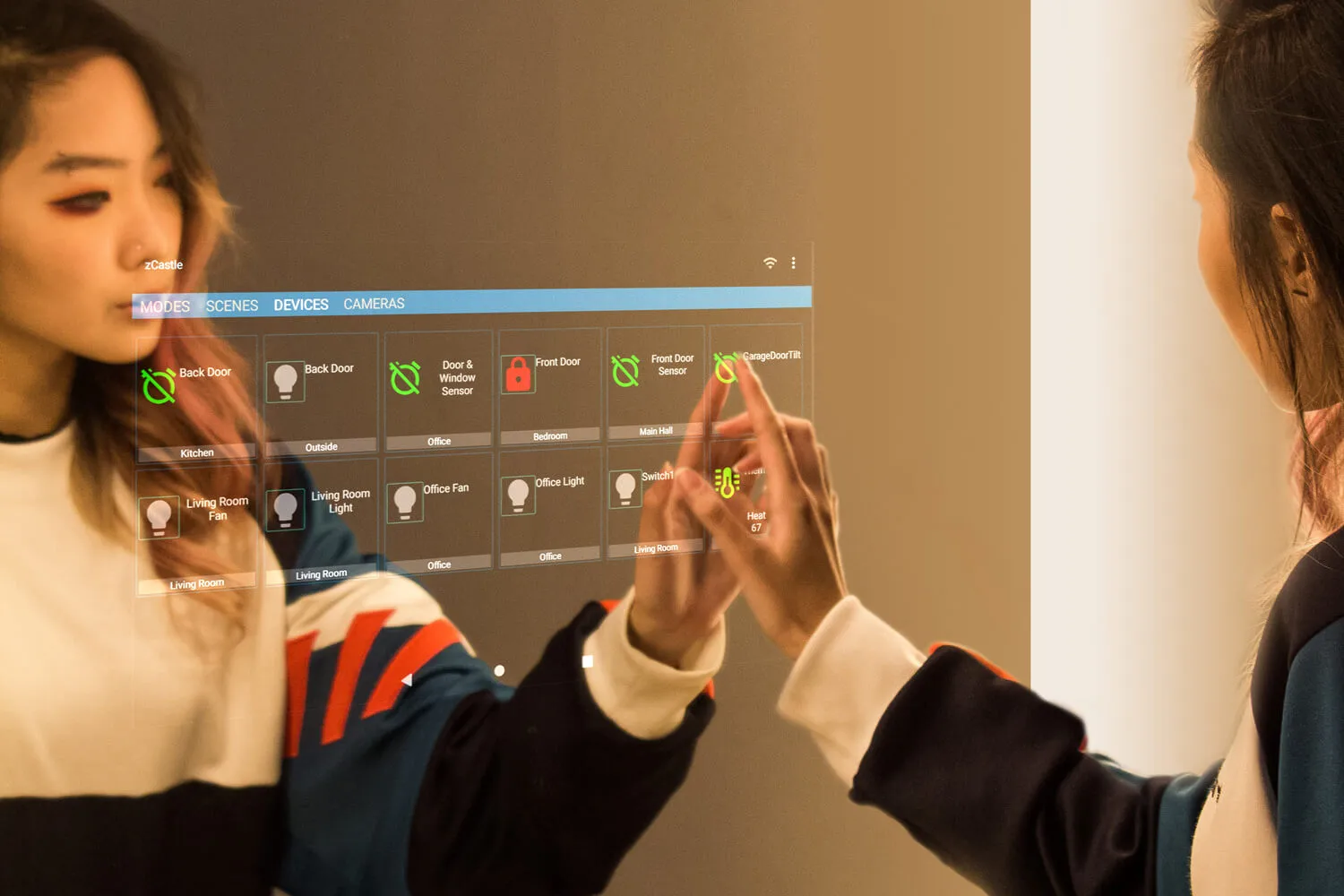
Installation, Infrastructure & Lifecycle Considerations
The performance and longevity of a smart touchscreen mirror depend as much on precise installation as on advanced engineering. Proper mounting, ventilation, and wiring guarantee stable operation, especially in humid or high-traffic areas. For architects and integrators, these considerations go beyond setup — they define the lifecycle efficiency, serviceability, and sustainability of the solution. By adhering to international electrical and IP standards, and through modular construction practices, MUES-TEC ensures that each mirror delivers consistent reliability and ease of maintenance throughout its operational life.
Mounting, Ventilation & Wiring
Installation must balance visual integration and serviceability. Recessed models require precise cutouts and airflow channels. Hardwired power ensures stable performance, while Ethernet connections reduce latency for data-heavy applications.
Service Access & Maintenance
Modular construction allows easy replacement of panels or drivers. Cleaning should use pH-neutral solutions and microfiber cloths to preserve coatings. Preventive maintenance — every 6–12 months — keeps systems performing optimally.
MUES-TEC emphasizes lifecycle efficiency: its mirrors feature modular designs, recyclable components, and long-term part availability to minimize waste and environmental impact.
Conclusion
Touchscreen mirrors represent a natural evolution in reflective technology — combining aesthetics, automation, and interactivity. From high-end bathrooms to flagship retail stores, they redefine how users experience and control their environments.
By integrating advanced optical engineering, secure software, and sustainable manufacturing, MUES-TEC demonstrates how precision German design can enhance both the visual and operational quality of modern spaces.
As buildings grow smarter and more connected, smart touchscreen mirrors stand at the intersection of functionality, sustainability, and user experience — transforming the simple act of reflection into a digital interaction.
FAQ
What is a touchscreen mirror used for?
A touchscreen mirror serves as both a reflective surface and a digital display, commonly used in bathrooms, hotels, retail, and healthcare for interactive control, lighting, and content access.
Are touchscreen mirrors safe for bathrooms?
Yes. A touchscreen bathroom mirror with IP44+ protection, sealed enclosures, and GFCI circuitry is designed for wet environments.
How does a smart touchscreen mirror connect to other devices?
Through Wi-Fi, Ethernet, or Bluetooth, enabling communication with smart-home systems, PMS, or BMS software.
Can touchscreen mirrors be customized?
Yes. Manufacturers such as MUES-TEC offer size, finish, and software customization to match architectural or brand needs.
Recent articles
September 26, 2025
Touchscreen Mirror Applications: From Bathrooms to Retail SpacesSeptember 19, 2025
Digital Mirrors: Technology, Features, and ApplicationsSeptember 8, 2025
Smart Mirror Link Integration: Connecting Apps and Devices